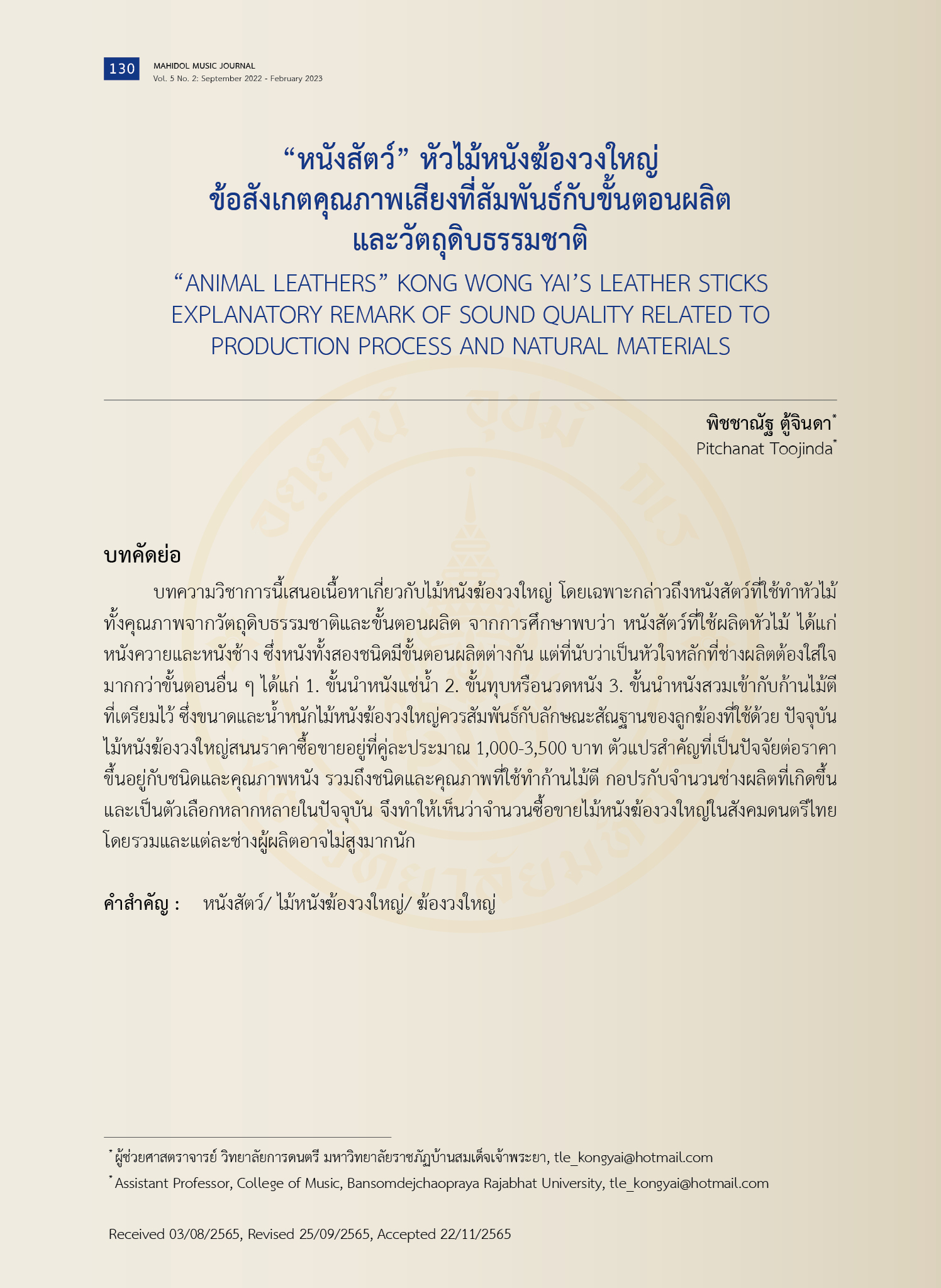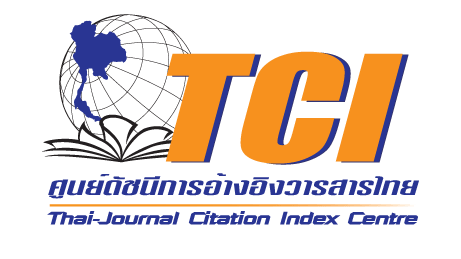“ANIMAL LEATHERS” KONG WONG YAI’S LEATHER STICKS EXPLANATORY REMARK OF SOUND QUALITY RELATED TO PRODUCTION PROCESS AND NATURAL MATERIALS
Keywords:
Animal Leathers, Kong Wong Yai's Leather Sticks, Kong Wong YaiAbstract
This academic article presents information about the Kong Wong Yai’s leather sticks. It especially refers to the leather that makes the head of the Kong Wong Yai’s sticks, and the quality of the Kong Wong Yai sticks in its production process using leather, and natural materials. This study found that the leather most commonly used for the Kong Wong Yai stick are buffalo leather and elephant leathers. The steps which instrument makers must pay attention to are 1. Process of bringing leather in water 2. Process of thrashing and kneading the leather 3. Process of attaching the leather on the Kong Wong Yai sticks. The size and weight of Kong Wong Yai should be relative to the size of the bump of the bowl. At present, Kong Wong Yai’s leather sticks are selling around 1,000-3,500 baht per pair. The key factors in price depend on type and quality of the leather and the type and quality of Kong Wong Yai’s sticks and also the number of instrument makers also have an influence on the price. It can be seen that the marketing of Kong Wong Yai’s leather sticks in Thai music society and among individual instrument makers is not very high.
References
ชลอ ใจชื้น. "หนังสัตว์ หัวไม้หนังฆ้องวงใหญ่ ข้อสังเกตคุณภาพเสียงที่สัมพันธ์กับขั้นตอนผลิตและวัตถุดิบธรรมชาติ." สัมภาษณ์โดย พิชชาณัฐ ตู้จินดา. 18 มีนาคม 2565.
นิทัศน์ แปลงรัตน์. "หนังสัตว์ หัวไม้หนังฆ้องวงใหญ่ ข้อสังเกตคุณภาพเสียงที่สัมพันธ์กับขั้นตอนผลิตและวัตถุดิบธรรมชาติ." สัมภาษณ์โดย พิชชาณัฐ ตู้จินดา. 11 มีนาคม 2565.
สมชาย ลัดดาอ่อน. "หนังสัตว์ หัวไม้หนังฆ้องวงใหญ่ ข้อสังเกตคุณภาพเสียงที่สัมพันธ์กับขั้นตอนผลิตและวัตถุดิบธรรมชาติ." สัมภาษณ์โดย พิชชาณัฐ ตู้จินดา. 16 มีนาคม 2565.

Downloads
Published
How to Cite
Issue
Section
License
Copyright (c) 2023 College of Music

This work is licensed under a Creative Commons Attribution-NonCommercial-NoDerivatives 4.0 International License.
The copyright of the article belongs to the author. Published articles represent the views of the authors. The editorial team neither necessarily agree with nor take any responsibility for the article.





